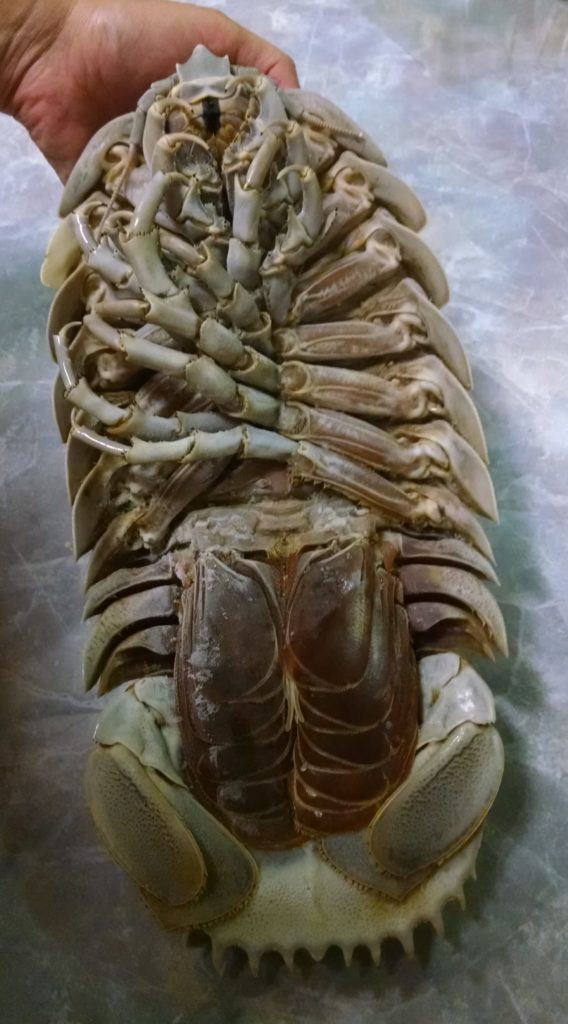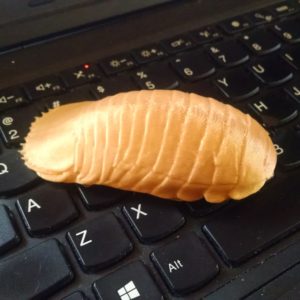
I love giant deep-sea isopods (Bathynomous giganteus if you’re fancy).
I’ve written quite a few articles about giant isopods. Giant isopods were prominently featured in our epic ocean monograph, Sizing Ocean Giants. I’ve even been fortunate enough to observe novel giant isopod behavior in the deep sea. If Southern Fried Science had a mascot, it would have to be the giant isopod.
When I started Scanning the Sea, I knew that a giant isopod would have to be part of the collection. There was just one problem: 3D scanning marine critters is an imprecise art, and you need to start with a very clean specimen. Most of the giant isopods I had access to had been floating in formalin for decades, or came up in pieces, or were preserved in a twisty, roly-poly ball. They weren’t good candidates for scanning.
This week I visited LUMCON to run an underwater robotics workshop, and discovered that the legend himself, fellow ocean blog overlord Dr. Craig McClain, had acquired a freezer full of giant isopods. And inside that freezer, was the perfect specimen to scan.

All it takes is a smartphone, the app 123D Catch, a decent computer, and a bit of patience, and you can create true-to-life 3D models of just about anything. A little more tweaking to make sure there’s an adequate print surface and to polish off fatal overhangs, and that 3D model becomes a 3D-printable giant isopod.
You know we can’t ever keep anything to ourselves here at Southern Fried Science, so head over to my Thingiverse page to download the shape file and print your own Giant Deep-sea Isopod! Then take your isopod on an adventure and share it on twitter with #GiantIsopod.

Hey Team Ocean! Southern Fried Science is entirely supported by contributions from our readers. Head over to Patreon to help keep our servers running an fund new and novel ocean outreach projects. Even a dollar or two a month will go a long way towards keeping our website online and producing the high-quality marine science and conservation content you love.
So, tell me about 3d scanning of complex objects – like a kelp holdfast. Some internal structure there. Thoughts?